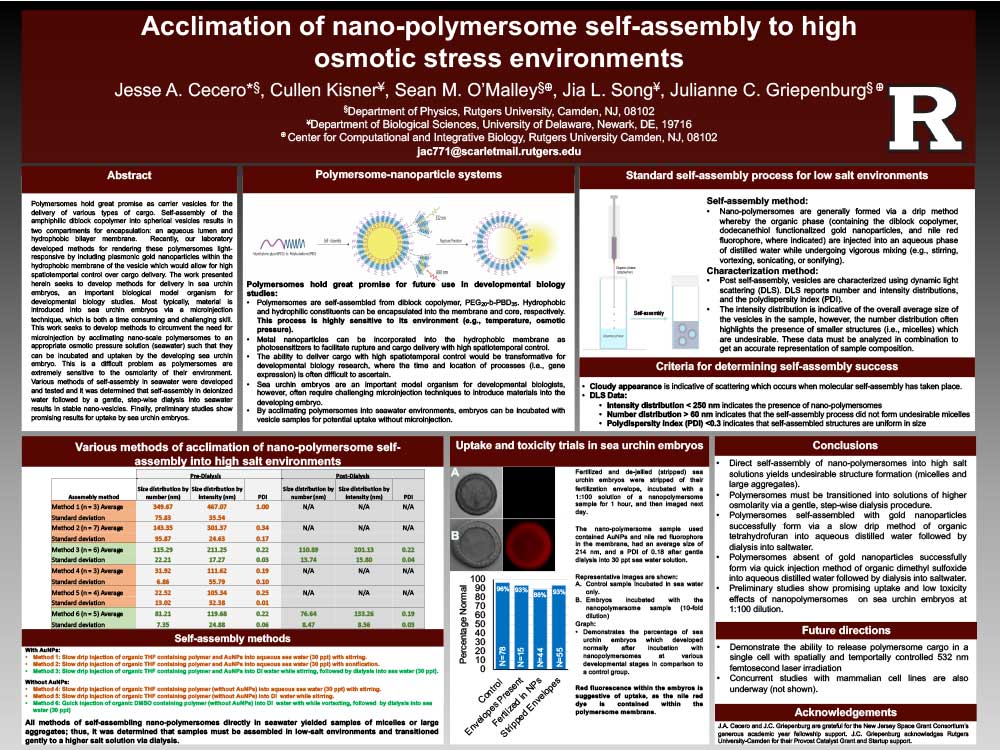Jesse Cecero ‘21
Major: Biology
Minor: Chemistry
Affiliation: Honors College
Abstract
Polymersomes hold great promise as carrier vesicles for the delivery of various types of cargo. Self-assembly of the amphiphilic diblock copolymer into spherical vesicles results in two compartments for encapsulation: an aqueous lumen and hydrophobic bilayer membrane. Recently, our laboratory developed methods for rendering these polymersomes light-responsive by including plasmonic gold nanoparticles within the hydrophobic membrane of the vesicle which would allow for high spatiotemportal control over cargo delivery. The work presented herein seeks to develop methods for delivery in sea urchin embryos, an important biological model organism for developmental biology studies. Most typically, material is introduced into sea urchin embryos via a microinjection technique, which is both a time consuming and challenging skill. This work seeks to develop methods to circumvent the need for microinjection by acclimating nano-scale polymersomes to an appropriate osmotic pressure solution (seawater) such that they can be incubated and uptaken by the developing sea urchin embryo. This is a difficult problem as polymersomes are extremely sensitive to the osmolarity of their environment. Various methods of self-assembly in seawater were developed and tested and it was determined that self-assembly in deionized water followed by a gentle, step-wise dialysis into seawater results in stable nano-vesicles. Finally, preliminary studies show promising results for uptake by sea urchin embryos.
Preview

